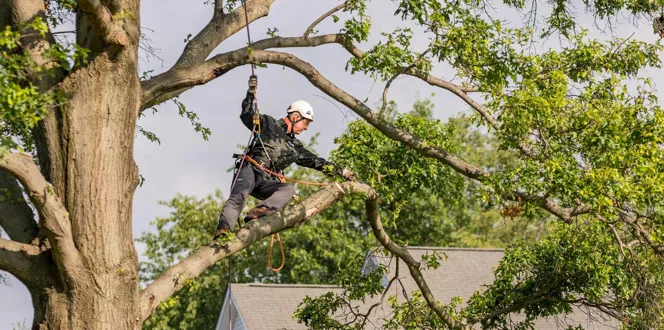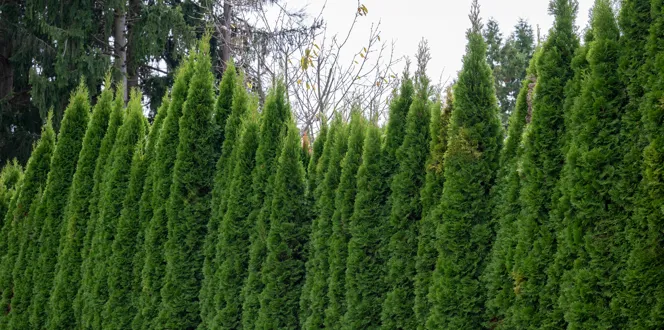When tangles of ivy climb your tree’s trunk, you either love the pop of color or resent the invading vines. But how do trees feel about the leafy green growth?
Keep reading to learn how ivy can harm trees as it grows and how to remove ivy from trees altogether.
Does Ivy Growth Harm Trees?
Even though some people really love the look of ivy on a tree, it can cause problems and affect the health of your trees. Here’s why.
Four Reasons To Remove Ivy From Trees
- Trees and ivy rely on the same supply of water and nutrients. Because ivy can be more aggressive, there’s a chance your tree isn’t getting its fair share of nutrition.
- Ivy growth crowds tree branches, blocking sunlight trees need to make food.
- Vines can weigh a tree branch down, putting it at a higher risk of breaking in a storm.
- Over time, an ivy invasion weakens a tree, making it a target for opportunistic pests.
Best Techniques For Removing Ivy From Trees
There are two ways to stop ivy from harming your tree: pull it out by hand or cut the main stem just above the area it is rooted and carefully apply a herbicide to the open cut. If unsure how to do it, please consult a certified arborist. . Either way, killing the roots is the most important thing, so the vines won’t pop up again.
How To Get Rid Of Ivy Roots (By Hand)
- Water beneath the tree or wait until after a rainfall. In soft soil, ivy is easier to remove.
- Use a hand pruner to cut ivy stems from their roots around the bottom of the tree’s trunk.
- Getting as deep as you can, pull the roots out. Remember, this is the best way kill the plant for good.
- Leave the ivy growing on the tree to die on its own. It’s tempting to rip the plant off, but this may seriously damage tree bark!
- Check the tree periodically to make sure new ivy sprouts haven’t cropped up. If they have, repeat.
Remember, these are recommendations for English Ivy. There are other vines that can grow on trees, among them is Poison Ivy. If you are unsure of what species you have, then please consult a certified arborist.







